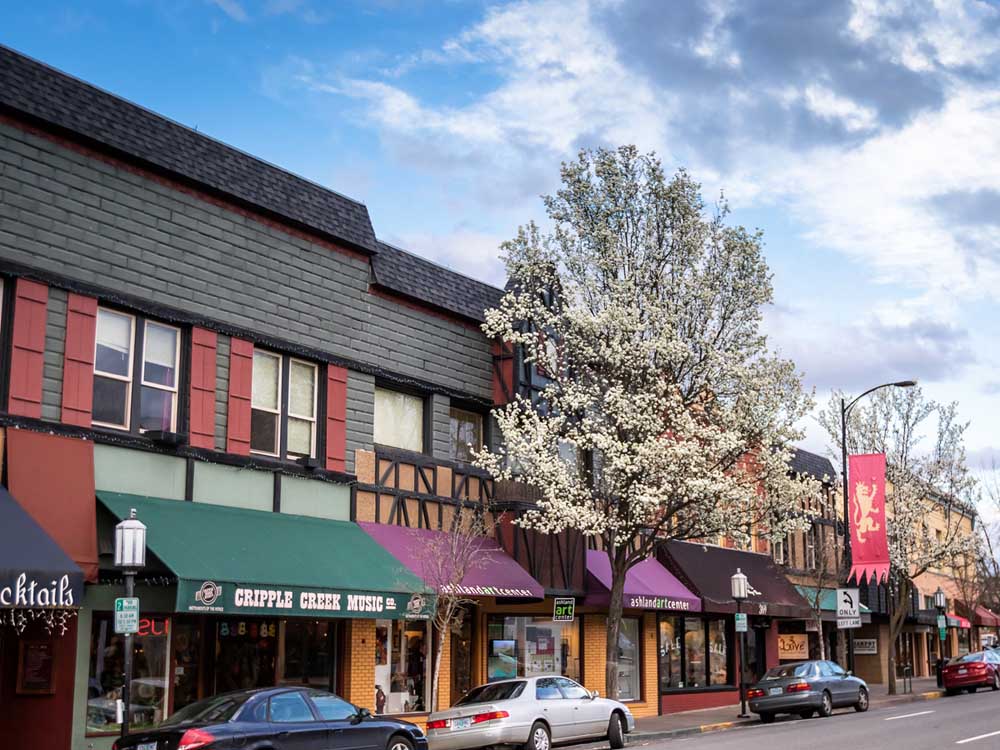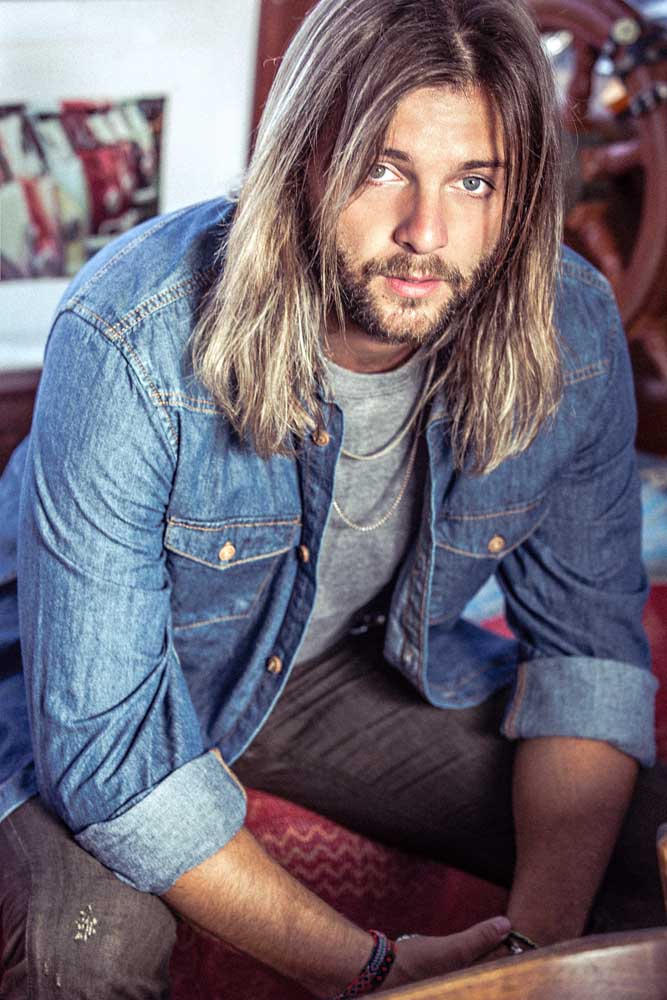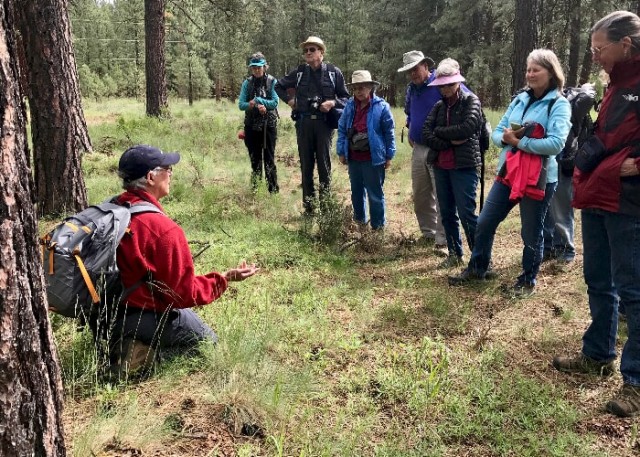Ashland’s Oregon Shakespeare Festival is one of a kind
Published 12:00 am Sunday, March 20, 2016

- Barb Gonzalez / For The BulletinThe colorful shops of East Main Street in downtown Ashland lend a slightly Tudor flair to the Southern Oregon community. With a population of about 23,000, Ashland is home to Southern Oregon University as well as it famed theater festival.
ASHLAND —
What is the magic of a small town in Southern Oregon that enables it to attract some of the greatest theatrical talent in the country?
Trending
Some might point to the lithia salts in its spring-fed mineral waters that bubble from fountains at the edge of Lithia Park in the town’s central plaza. Despite its reputation for health-instilling qualities, the spring water has such a rancid flavor that it can hardly be considered alluring, and to drink it too often is decidedly not healthy.
And although Ashland has an active New Age community with more than its share of crystal meditators and tarot-card readers, there have been no reports of any sort of cosmic vortex that might exert a magnetic pull.
Better one should study the reputation of the Oregon Shakespeare Festival itself. Since 1935, it has grown from English teacher Angus Bowmer’s midsummer night’s dream into an 8½-month extravaganza that presents not only the work of the planet’s most famous playwright, but also a variety of other productions, from 19th-century classics to world premieres.
The 2016 season, which by the end of October will bring 793 performances of 11 shows to audiences expected to exceed 400,000, began on Feb. 19 with Shakespeare’s comedy “Twelfth Night.” Other early-season productions are Charles Dickens’ coming-of-age drama “Great Expectations”; Gilbert & Sullivan’s musical operetta “The Yeomen of the Guard”; and the world premiere of “The River Bride,” a fantasy romance set in the Amazon jungle of Brazil.
It takes 3½ to 4 hours to drive the 200 miles from Bend to Ashland via Prospect and Medford. Leave by noon on a Tuesday, as we did, and you’ll arrive in the town of 23,000 with plenty of time to check into your lodging, enjoy an early dinner and make it to an evening performance with time to spare.
The opening act
Trending
“Twelfth Night” was the first play ever presented at the festival, on July 2 and 4, 1935. It was staged outdoors on the current site of the Allen Elizabethan Theatre, whose current 1,190-seat version — modeled after England’s 1599 Fortune Theatre — was built in 1959 and updated in 1991. Nightly productions (except Mondays, which are “dark” at OSF) are mounted here from June to mid-October when weather is most likely to be warm and dry.
OSF’s other two theaters are indoor venues, enabling them to offer matinee and evening performances throughout the season. The 600-seat Angus Bowmer Theatre, named for the festival’s founder, opened for the 1970 season. With no seat more than 55 feet from the stage, it offers an intimacy of experience for actors and audience.
Most unique of OSFs three theaters is the Thomas Theatre, a flexible performance space that enables more experimental productions. Depending upon configuration (which rotates daily), it seats between 230 and 360.
The Thomas is the setting for “Yeomen,” as well as “Vietgone,” a new play about the Vietnamese-American experience opening March 30, and “Richard II,” Shakespeare’s historic tragedy about the fall of the Plantagenet king, opening July 5.
Scheduled for the Bowmer Theatre later this year are “Roe” (April 20) a contemporary drama based upon the 1973 Roe v. Wade Supreme Court decision legalizing abortion, and “Timon of Athens” (July 28), another Shakespearean tragedy.
The Elizabethan’s outdoor season kicks off June 7-9 with “Hamlet” and an Asian-cast version of “The Winter’s Tale,” as well as “The Wiz” (“The Wizard of Oz” through an African-American social lens).
What’s on now
Especially early in the season, theater lovers can pack four plays and a backstage tour into a two-night stay.
I always like the backstage tours, which begin at 10 a.m. most days at the Thomas Theatre. Last week, Kimberley Jean Barry, an OSF stage manager for 37 years, offered background to the festival. Then veteran actor Kate Mulligan walked us through the passages that extend beneath the Bowmer and Elizabethan stages. She explained how stagehands change sets between plays; how actors can make complete costume changes in as little as 30 seconds; how such technical aspects of a production as sound and lighting are handled.
“Twelfth Night” was the most difficult to follow of the three plays we saw at the Bowmer. For the audience member not accustomed to hearing conversations in an Old English dialect, this decidedly gender-bending romantic comedy was initially hard to embrace. By the second act, however, one accepts the transformation of Shakespeare’s fictional country of Illyria into the Illyria Studios of 1930s Hollywood.
“It was a period where one could reinvent one’s self,” said actor Ted Deasy, who performs the role of Malvolio. “Part of the joy of this production, and the brilliance of what (director) Chris Moore has done, is in the blending of genders.”
I thoroughly enjoyed “The River Bride.” This world premiere production by Mexican-American playwright Marisela Treviño Orta, loosely inspired by The Brothers Grimm, tells of two Brazilian sisters living in a village beside the Amazon River. When a mysterious stranger is one day fished from the river by their father and the younger sister’s fiance, their lives are forever changed. The cast of six is entirely of Hispanic heritage.
“Great Expectations,” billed as a world premiere adaptation of the Charles Dickens classic, nonetheless seemed true to the original story: Director Penny Metropulos’ challenge would have been in how to condense a three-volume 1861 novel into a three-hour play. It follows country boy Pip from early youth to young adulthood in London, focusing on his desire to be a “gentleman,” his relationship with a childhood sweetheart and his loyalty to friends.
“The Yeomen of the Guard” was the most surprising of the four early-season plays, perhaps in large part because director Sean Graney’s adaptation was set in the Thomas Theatre. A favorite of Gilbert and Sullivan, who collaborated on 14 comic operettas between 1871 and 1896, “Yeomen” turns Victorian libretto into a country-and-western musical tale with jailers, deputies, vagabond singers and a wrongly accused convict wandering across a stage they share with dozens of theatergoers seated among them.
Cast confessions
At least one of the cast, “Happy Yeoman” Michael Caruso, later confessed his initial discomfort with the adaptation. Perhaps his candor was encouraged by the fact we were sharing a beer at Martino’s Lounge, a local watering hole whose location beside the Bowmer Theatre makes it a popular place for post-production cast gatherings.
“I saw a conflict of interest in bringing operetta to an acoustic country style,” said Caruso, 38, a composer and former stagehand who has lived in Ashland for 10 years. “I was getting frustrated. Then, at the second preview (a final dress rehearsal), we decided to change the lyrics and melody of the opening number.
“The whole process for me was about not taking life too seriously. That’s really good for me. I have to trust it’s in the best interest of the show.”
Deasy, who makes his permanent home in New York, plays two major roles during the 2016 season. In addition to “Twelfth Night,” he tackles the role of Barnardus in “Hamlet,” representing his eighth appearance at Ashland since 1995. “So many artists in the American theater have a connection here,” he said. “I have great pride and excitement in being a part of it.”
Deasy said the OSF’s sterling national reputation is a credit to artistic director Bill Rauch. “He is asking questions that aren’t getting asked at many other theaters in this country,” the 51-year-old actor said. “We try things that have never been tried, see them in ways they’ve never been seen and constantly expand our pool of artists.
“I think that has had as much effect on American theater as anything else. He’s asking of us, as humans and artists, to openly and uniquely meld the newest works with the oldest works, and to see them through the lens of current humanity.
“And we’re getting paid to do that? It’s an unbelievable bonus.”
Around Ashland
When actors aren’t on stage — and that may seem rare, as most contracts require they take on two primary roles and understudy two others, simultaneously, during the season — they find Ashland to be a wonderful home, temporary or permanent. Theater visitors can do the same.
Southern Oregon University has more than 6,000 students who study subjects from theater arts to environmental science. Its presence lends a countercultural element to the community, widely seen in its stores and street scene, from the central Plaza to the gentrified Railroad District.
Nearby is year-round outdoor recreation, from skiing at Mount Ashland to kayaking and fishing Cascade and Siskiyou streams. A burgeoning wine country, both in the rolling hills near the town and in the Applegate Valley, beginning about 20 miles west near Jacksonville, attracts many more visitors.
There are numerous fine lodgings and dining establishments, as befits a busy, tourist-oriented community. I’m partial to the historic, nine-story Ashland Springs Hotel, which rises above Main Street just a block from the OSF campus. Once known as the Marc Antony, the elegant boutique hotel has 70 rooms, an adjacent day spa and the integral Larks Restaurant, which serves three gourmet meals a day.
Two of my other favorite Ashland restaurants are also part and parcel of small hotels: The Peerless Hotel and Restaurant and the Alchemy Restaurant in the Winchester Inn. Amuse is another upscale dining spot, while Thai Pepper and the Taroko Pan-Pacific Bistro are excellent stops for ethnic cuisine.
— Reporter: janderson@bendbulletin.com.








